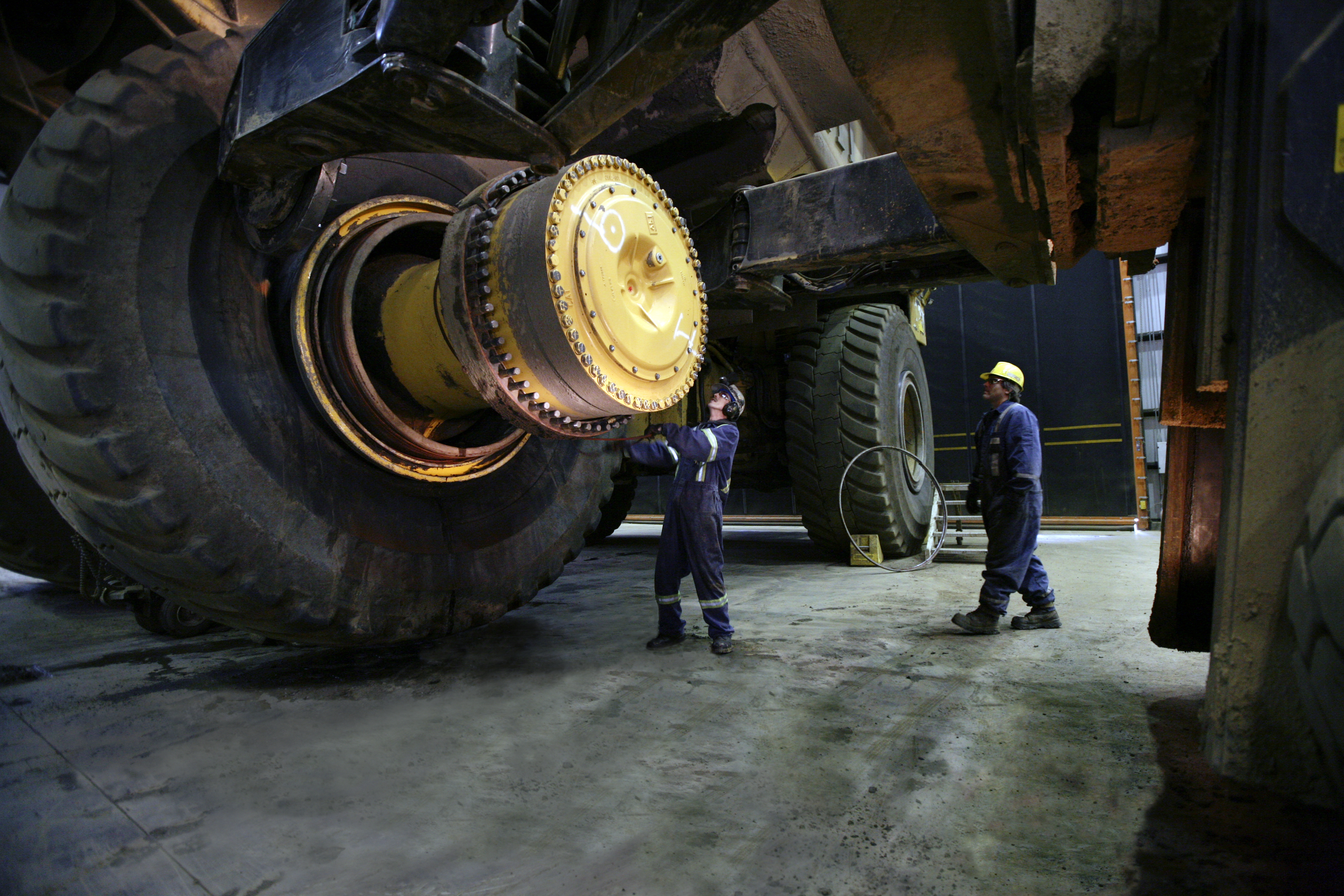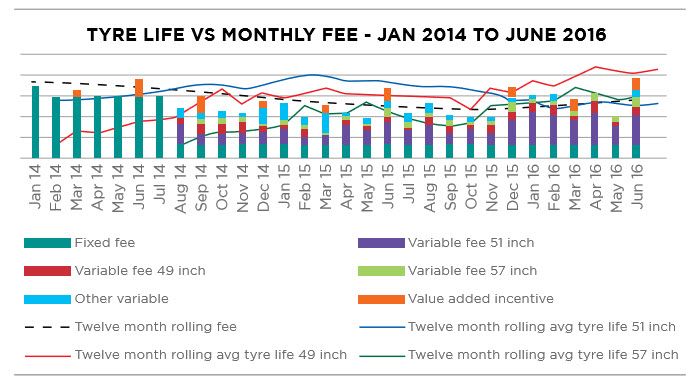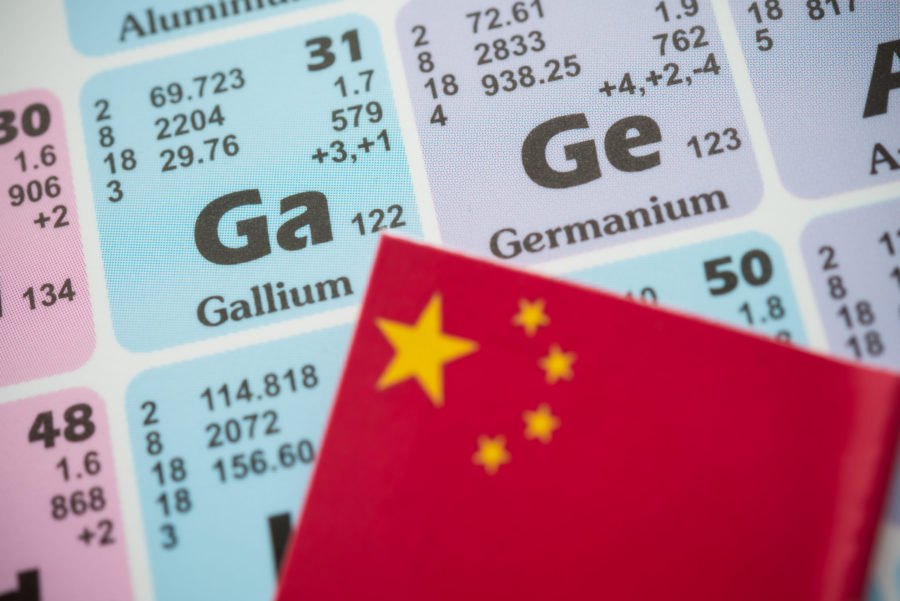Kal Tire Invests in Customised Price Models

In a bid to help a long-standing customer remain competitive amidst severe market pressures, Kal Tire Ghana went to the drawing board to customise a completely new price model that flexes with mining activity. So far, it’s yielded even better results than either company could have imagined— saving the customer more than 30 per cent in tyre service charges.
If the heads of the customer’s operation in Ghana were listing the challenges they faced in the fall of 2013, they might have run out of fingers. The price of gold had dropped by 19 per cent and the planned decommissioning of the heap leach section of the mine was going to reduce gold output by around 20 per cent. The mining plan for 2014 had been set at 100 million tonnes, down from 146 million in 2013. Plus, 30 per cent of the dump truck fleet was to be parked.
With an objective of reducing cost, Kal Tire’s customer launched a strategic review of contracted services with a view to insourcing. At this stage, Kal Tire had been providing tyre service to the customer’s mine for 10 years and had seen a number of sub-contractor services subsumed into owner operation. Rather than accept, even psychologically, a certain inevitability of the prevailing trend, Kal Tire and its customer sought a more creative engagement to explore alternatives for the best outcome for both parties.
Over the succeeding six months, Kal Tire and its customer engaged in a series of workshops to evaluate a number of options to meet the needs of both parties. Key to the resolution was a mechanism by which both parties’ objectives were aligned, and, in particular, the ability to convert fixed charges into variable and reward both parties for better tyre performance.
“We looked at an alternative, cheaper model, or do it ourselves,” says Mr. Landsberg, engineering manager for heavy mining equipment at the Ghana mine. “But we worried we would miss out on the technical development.”
Kal Tire Ghana, which had been servicing the customer’s fleet since 2005, acted quickly. Already the two companies had worked together in 2011 to introduce a value-added incentive cost model which aligned both companies’ goals of optimising tyre life and minimising downtime on the mine’s 51-inch tyres, which comprised the majority of the fleet’s tyres at the time. Downtime is one of the key performance metrics that Kal Tire measures, but never at the expense of safety or correct procedure.
When it was time to renegotiate the 2014 contract, and given all the market pressures, Kal Tire decided to work with the customer to devise a completely new pricing model.
“We heard what the customer had to say about their important business issues,” says Gordon Knox, operations director, Ghana, Kal Tire’s Mining Tire Group. “We challenged ourselves to find a new model to accommodate those needs, not just for the length of the contract but for the long haul. It really was a combined effort and it took several attempts to get the model right, but we got there in the end.”
“Kal Tire really went out of their way to come up with an alternative model,” says Landsberg.
Using tyre change out sheets, daily activity logs, and historic and predicted tyre life data, as well as a deep understanding of the needs and challenges of the customer, Kal Tire Ghana created a customised cost plus pricing model that flexes with mining activity.
Both companies quickly defined the key challenge: provide a 24-hour 365-day fixed service capability, and simultaneously flex charges with activity.
The resolution came through the development of a customised activity and performance-based model.
Kal Tire forecasted the new model would reduce costs by 29 per cent; but in fact, at the first year review, the company actually achieved a 32 per cent reduction in tyre service expenses.
“This model drives us to make the tyres perform,” says Landsberg

The above graph depicts the actual trends in tyre life and total tyre service fee charges over the last thirty months: improving tyre life, solid trend lines, and reducing total tyre service costs, dotted trend line.
If the size of the mine’s fleet changes, there’s a buffer and mechanism built into the contract to review the model.
“We have the flexibility of changing the operational fleet quickly and getting the benefit immediately, and it accommodates periods of lower activity,” says Landsberg. “Plus the contract is much easier to manage.”
Aside from creating a cost-effective approach, Kal Tire, which had been on-site for years, offered enormous efficiencies. With both a retread factory and rim inspection facilities on site, Kal Tire really is the ‘one stop shop’ tyre contractor.
“We really didn’t want to have three different contractors on site,” says Landsberg. “Plus, Kal Tire had really invested in their service offerings for us.”
For Kal Tire, keen not just to stay on the mine but also to help the mine succeed, the custom price model project was an opportunity to demonstrate a long-held vision of being true partners.
“We didn’t give them a ‘take it or leave it’ proposition. Kal Tire worked really closely with the customer through a series of collaborative workshops to come up with a solution together and we did it with the idea that if it worked, this would be a long-term partnership that would benefit both of us,” says Knox.
More News
Is Basel III setting up a new gold-backed monetary system?
April 20, 2025 | 08:22 am
China’s export controls are curbing critical mineral shipments to the world
April 20, 2025 | 08:15 am
{{ commodity.name }}
{{ post.title }}
{{ post.date }}




Comments